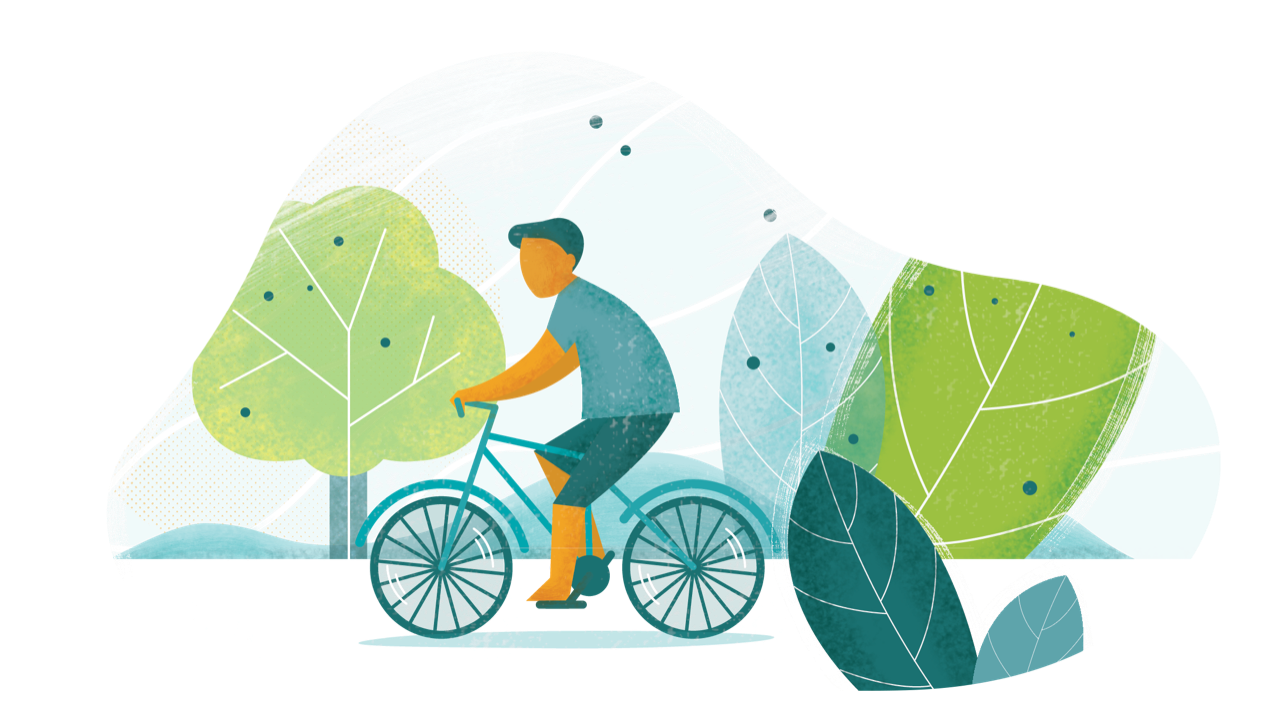Example 1: Physical activity and active transport
Possibly one of the most relatable examples is the direct link that can be made between the health benefits of physical activity and the environmental benefits of active transportation. Physiotherapists regularly recommend maintenance and increase of physical activity as a critical intervention for health and wellbeing relevant to a wide variety of health conditions. Physical activity prescription is already deeply interwoven in physiotherapy education curricula around the world. The additional step to take here then would be to explore if, when, for who and in what contexts an increase in active transportation could be one element of clients’ physical activity, and to understand and explain its simultaneous benefits for health and environment. There are extensive amounts of research on the many benefits of physical activity and a steadily growing body of research on the environmental benefits of active transport (e.g. walking and cycling) versus passive transport (e.g. driving cars), for example via a reduction in greenhouse gas emissions and the use of fewer natural resources and space. Combining these strands would not be likely to require much additional resources and time, given the firm anchoring of physical activity prescription and could amount to a significant contribution to planetary health if delivered at scale. As a widely discussed intervention in planetary health and sustainable healthcare in general, the primary issue here might lie in physiotherapists understanding the importance of contributing to it alongside colleagues in other healthcare professions (Haines & Scheelbeek, 2020).

